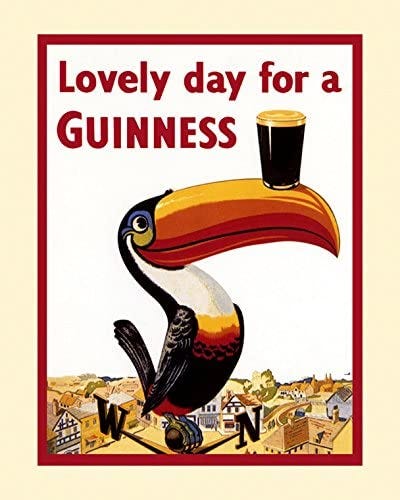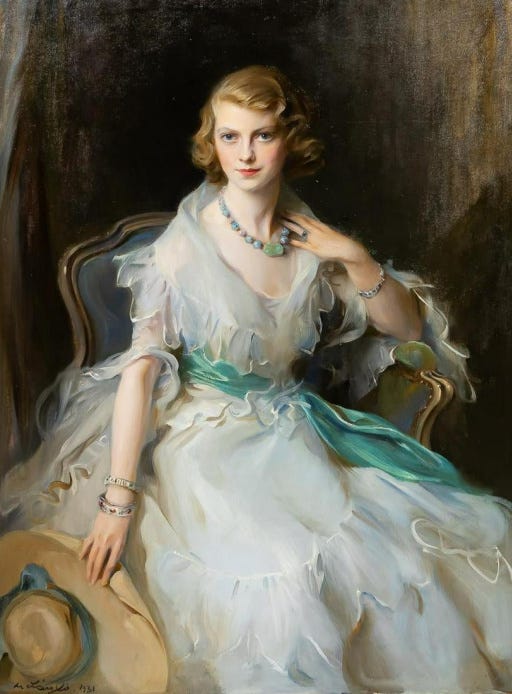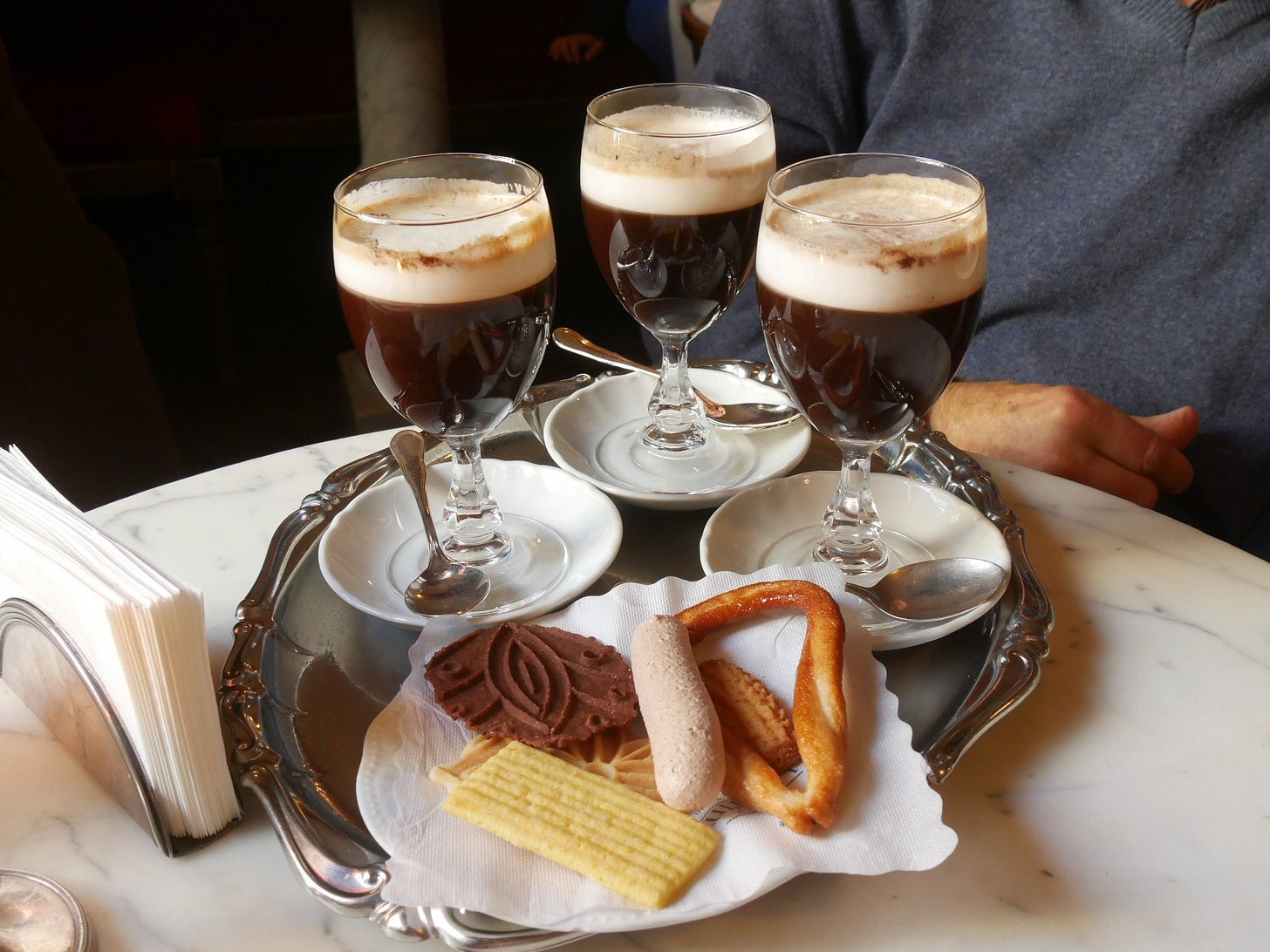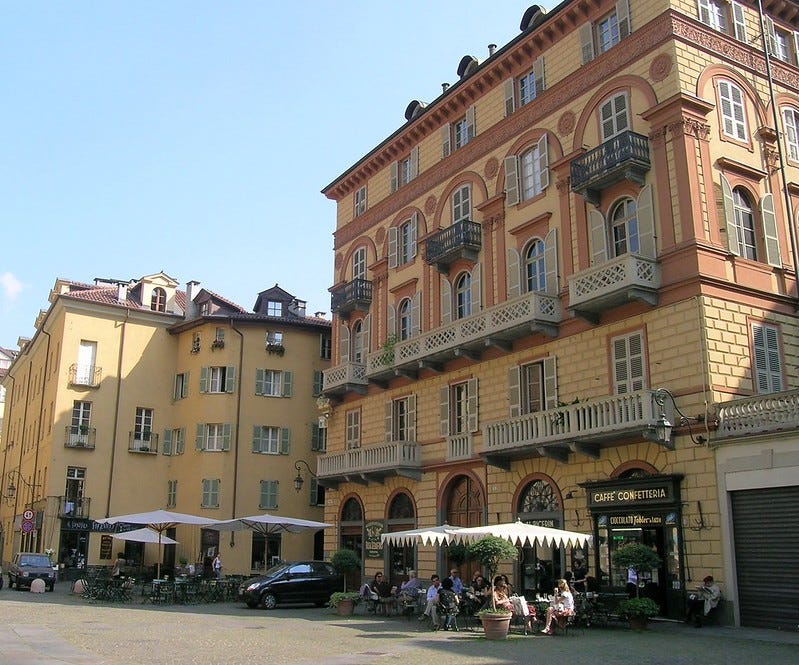Smart Mouth merch is on sale! Be Earth-friendly and use metal utensils for carryout! You can buy it here. And use this coupon code to get free shipping: shipshiphooray!
If you enjoy the newsletter today, please forward it to someone who’d enjoy it, and tap the heart icon above, which will help me reach more readers. I appreciate your help, y’all!
Guinness and Ireland with Emily Hourican
Beer, religion, and the British aristocrats who were actually Nazis (it was a near miss).
Listen to Smart Mouth: iTunes • Google Podcasts • Stitcher • Spotify • RadioPublic • TuneIn • Libsyn
The Sugary, Literary, Signature Coffee Beverage of Turin
By Susannah Edelbaum
Emanuele Filiberto, the Duke of Savoy from 1553 to 1580, is said to have returned home to Turin toting the city’s first cocoa beans, a gift from the Spanish court of King Charles V. Whether that’s legend or history, in Italy, “it seems that even the first solid chocolate was made in Turin,” says Maddalena Borsato, an academic researcher at the University of Gastronomic Science of Pollenzo. Borsato believes that Turin’s long legacy of chocolate production gave rise to the bicerin, the signature local way to serve coffee. Italy might generally be known for tiny espressos downed standing at the bar, but in Turin, the go-to coffee is an 18th-century, three-layered concoction composed of rich, dark hot chocolate, coffee, and a thick dollop of cream. You’ll definitely want to take it sitting down.
Photo: Luca Galli/Flickr
So named for the glass in which it must be served (bicerin is Piemontese dialect for bicchierino, or “little glass”), the drink is as much a deeply flavorful tie to Turin’s history as it is a sweetly caffeinated repast. Though it appears on the menus of the huge, ornate cafes the city is known for, you want to taste it at Caffè al Bicerin, a family-run cafe founded in 1763 and, as the name implies, the site of the drink’s invention. Here, according to Borsato, the bicerin first evolved from the bavareisa, a combination of coffee, chocolate, milk, and syrup, the name of which literally means “easy to drink.” As the bicerin surged in popularity, local Turinese intertwined the new beverage with its source, and the name stuck. (Conveniently for foreign visitors, Caffè al Bicerin also rolls more trippingly off the tongue than the name it replaced: Bottega Dell'acquacedratario Giuseppe Dentis.)
The drink was delicious enough for Alexandre Dumas to sing its praises “in an 1852 letter to a friend,” says Alberto Landi, the cafe’s present-day owner. And in 2010, writer Umberto Eco did Dumas one better, immortalizing Caffè al Bicerin itself as a setting in his novel “The Prague Cemetery.” Try to make your visit on a weekday: it’s a locally beloved destination, and the cafe’s petite, restored historic interior and few outdoor tables get busy during prime time.
Once there, whatever you do, don’t stir your bicerin. A chief joy of the drink is the sensation of sipping through each of its distinct layers. And should you find yourself outside on the quiet plaza taking in the scenic view of the neighboring church, the Sanctuary of the Consolata, this too is part of the history in your glass — at a time when the city’s cafes were still primarily the province of smoking, drinking men, women felt comfortable patronizing al Bicerin thanks to its location (as well as the female management that took over in 1917). It might not have the buzzy feeling of throwing back an espresso shot at a crowded bar, but the slowly, sweetly sipped depth of the bicerin is an Italian pleasure all its own. ☕
[Ed note: There’s a French teenager who is making moves to become queen of Italy. Her ancestor is mentioned in the story above. Her dad, Prince Emanuele Filiberto di Savoia, has been a Smart Mouth guest.]
This newsletter is edited by Katherine Spiers, host of the podcast Smart Mouth.
A TableCakes Production.
Want to contribute? Here are the submission guidelines.







